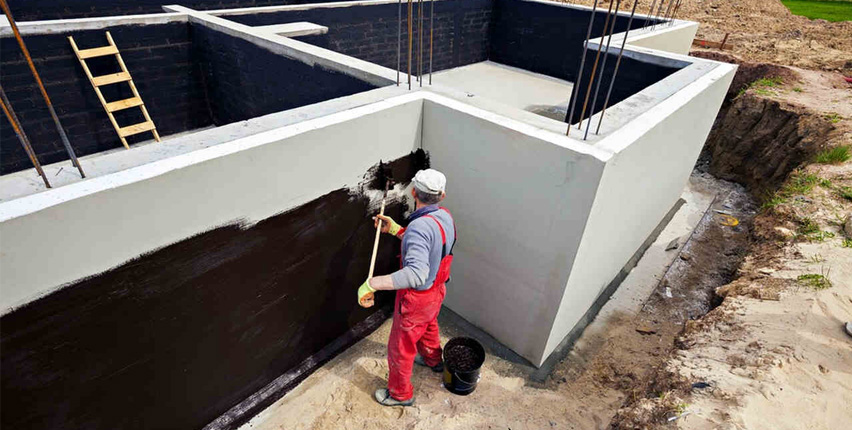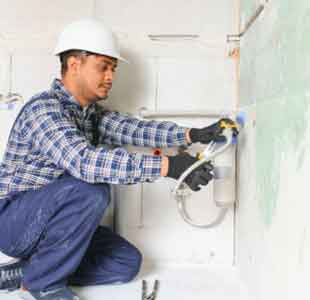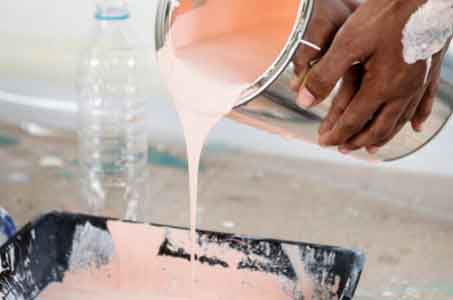Loading

Water damage is something many home owners deal with, especially when the rains arrive. You might spot paint coming off, dark patches forming, or a musty smell lingering in a room. These are signs that moisture has already gotten into the wall. Once that happens, the wall starts to weaken bit by bit. This is why waterproofing isn’t something extra anymore. It’s become a basic need, especially in places where it rains a lot or the air stays humid. If walls aren’t protected early, the damage grows quietly and becomes much costlier to fix later. Let’s discuss why waterproofing is important, what causes walls to become damp, and what kind of chemical or coating actually works to prevent it.
Many people don’t think about waterproofing until the signs become obvious. Maybe there’s some peeling paint, or the wall feels a bit damp to the touch. Sometimes the room just smells off. These are all late warnings. By the time you notice them, moisture has already been sitting inside the wall for a while. It’s not that water suddenly causes damage overnight. It creeps in little by little and stays trapped inside unless there’s something stopping it. There are a few ways this happens. One of the most common is rain. During the monsoon, outside walls take the full hit. If the surface isn’t sealed well, water gets through. Inside the house, steam and humidity from cooking or hot showers build up. Over time, it clings to walls, especially in areas with poor ventilation. Leaking pipes are another problem. A small leak hidden behind a wall can stay unnoticed for months. But that slow trickle is enough to cause long-term damage. In basements or on lower floors, water can also rise up from the ground. This is known as rising damp, and it’s harder to spot until the damage is already there. Once this moisture gets in, it doesn’t just go away on its own. The wall slowly absorbs it. Over time, the structure inside starts to break down.
Paint that bubbles up or peels off in flakes
Patches that turn black or green, which is usually mold
Cracks forming as the plaster gets weaker
A stale or damp smell that sticks around
Trouble with wiring, since water near electric points is always risky.
Not all products are the same. Some are meant just for light rain, others for long-term protection. Here’s what you should expect from something that actually works:
Integral Waterproofing Chemicals
Surface Waterproofing Chemicals


Not all waterproof paints are equal. The best waterproof paint for walls is the one that suits your wall surface, weather conditions, and budget.
Waterproofing is not cheap, but it’s worth the cost. Think of it like insurance for your house. You pay once, and you avoid big repair costs later. Fixing dampness after damage takes 2x or 3x the cost. So it’s smarter to treat your walls early with the right waterproof chemical for walls. Also, modern products don’t need re-application every year. A good product can last 5–10 years easily, depending on the surface and weather.
Waterproofing protects your walls from long-term moisture damage. Without it, rain, humidity, or leaking pipes can lead to peeling paint, mold, cracks, and a weak wall structure. Early waterproofing prevents costly repairs in the future.
Look out for paint that peels or bubbles, black or green mold patches, a musty smell, visible cracks, or dampness to the touch. These are all signs that water has already entered and is damaging the wall.
There are two main types:
• Integral waterproofing chemicals are mixed into cement or plaster during construction.
• Surface waterproofing chemicals are applied like paint after the wall is built to protect from rain and humidity.
Choose a waterproof paint that offers water resistance, UV protection, breathability, and crack-bridging ability. Also, make sure it suits your wall type, climate, and desired finish. A good product can last 5–10 years with minimal maintenance.